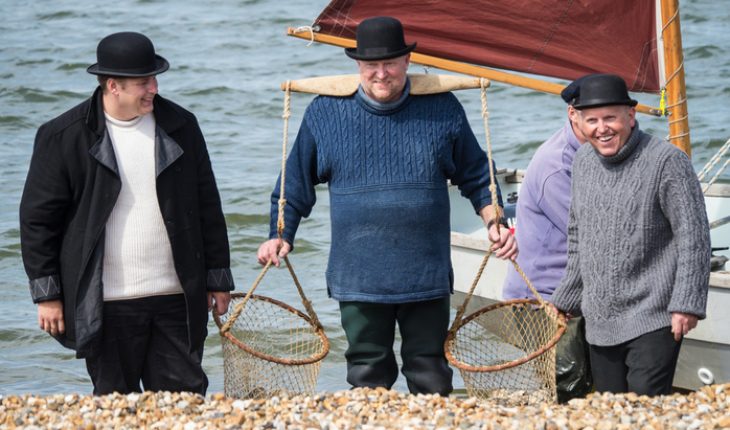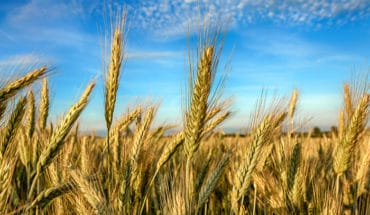This weekend, July 22—24th, Whitstable celebrates its famous oysters with the Whitstable Oyster Festival, this year held on Tankerton Slopes. The town’s famous oyster beds inspired local writers, from Charles Dickens, to Somerset Maugham.
The festival opens on July 22nd with an ancient tradition – the Landing of the Oysters, on East Quay Beach, when mouth-watering oysters are brought ashore and blessed by clergy.
These bivalves are then carried along by a procession and serenaded with music. This ancient ceremony takes place when native oysters are out of season (the season begins on 1 September), because tradition dictates that the Festival coincides with the oyster dredgers’ holiday, on St James’s Day (25 July).
Oysters feed on plankton in the water column and each oyster filters about 30 to 50 gallons of water a day. Apart from being environmentally friendly by helping to keep the sea clean and providing many other ecosystem services, they also have many health benefits. Oysters are a good source of iron, zinc and vitamin B 12 which helps to fight depression and packed with protein and immune boosting nutrients and minerals including copper, vitamin B12, iron, iodine and vitamin D. These shellfish contain nearly fifty times the amount of zinc that is found in chicken. Zinc boosts energy levels and helps process the carbohydrate, fat and protein in the food we aid and helps the healing of wounds. All it takes is three oysters to get more than 100% of your RDA of zinc. They also contain a protein that’s rich in the amino acid tyrosine which helps brain function. Contrary to the old wife’s tale, eating shellfish does not raise blood cholesterol. Oysters are low in fat in calories and ideal for dieters. They are also a wonderful source of the Omega-3 fatty acid.
The Whitstable Oyster Festival has been running since 1985, although traditions such as the Blessing of the Waters, the Landing of the Oysters and grotter-building date back much further.
The Whitstable Oyster Festival has been running since 1985, although traditions such as the Blessing of the Waters, the Landing of the Oysters and grotter-building date back much further.
Oysters have been farmed in Whitstable for centuries, but it was not until 1793 that the industry became highly regulated with the Act of Incorporation of the ‘Company of Free Fishers and Dredgers of Whitstable’. The Whitstable Oyster Fishery Company, which still runs the oyster trade today, was set up by an Act of Parliament in 1897.
“This year we will put out two million seed oysters which will take around two to three years to grow,” says James Green, the Director of the Whitstable Oyster Fishery Company. “Whitstable is World famous for oysters and people come from as far afield as China, and America, especially for our oysters. It is important to people to know that their shellfish have been sustainably farmed and grown in a manner that benefits the environment. This summer the oysters have been growing quickly with the warm weather encouraging the growth of the plankton in the water on which the oysters feed.”
The modern festival reflects a tradition that dates from Norman times, when local fisherman held a festival and service of thanksgiving around the feast day of St. James of Compostella (25th July). The Whitstable Oyster Festival traditionally celebrates the oystermen’s holiday; The British native oyster spawns from May to August, during which time they are left alone by the fishermen, hence the traditional closed season for oyster eating in any month with an “r” in it. Pacific rock oysters are farmed year-round and it is these that are available during the festival.
The Romans loved British oysters, cultivated them on the north Kent coast and elsewhere, ate them in great quantities and exported them to the rest
of the Roman Empire. After the Romans left, oysters went out of fashion, and Britons did not start eating them again until the eighth century.
Somerset Maugham and Charles Dickens both lived in Whitstable for a time and dined on the local oysters. The novel ‘David Copperfield’ was set in the area.
Oysters are best eaten as simply as possibly to enjoy their taste to the full. Although usually smaller than rock oysters, natives are thought to taste more delicate. Your fishmonger can open them for you, but you need to eat them very quickly. Live, freshly opened oysters taste best. Arrange them on a bed of ice and serve them with a splash of lemon juice, or few drops of Tabasco.
Casanova, the 18th century lover who confessed to seducing 122 women in his memoirs suggested his own tips for serving in oysters in Volume 6: “I placed the shell on the edge of her lips and after a good deal of laughing, she suck in the oyster, which she held between her lips. I instantly recovered it by placing my lips on hers.” Casanova is reputed to have breakfasted on up to fifty oysters a morning to build up his strength. It is likely that the zinc boosted his legendary prowess.
- People’s Choice Victory for Down’s Syndrome Scotland Garden at Chelsea 2025 - 28th May 2025
- Cadogan: A Chelsea Family By Tamsin Perrett - 3rd May 2025
- Dream Worlds a new exhibition in Cambridge - 14th December 2024







